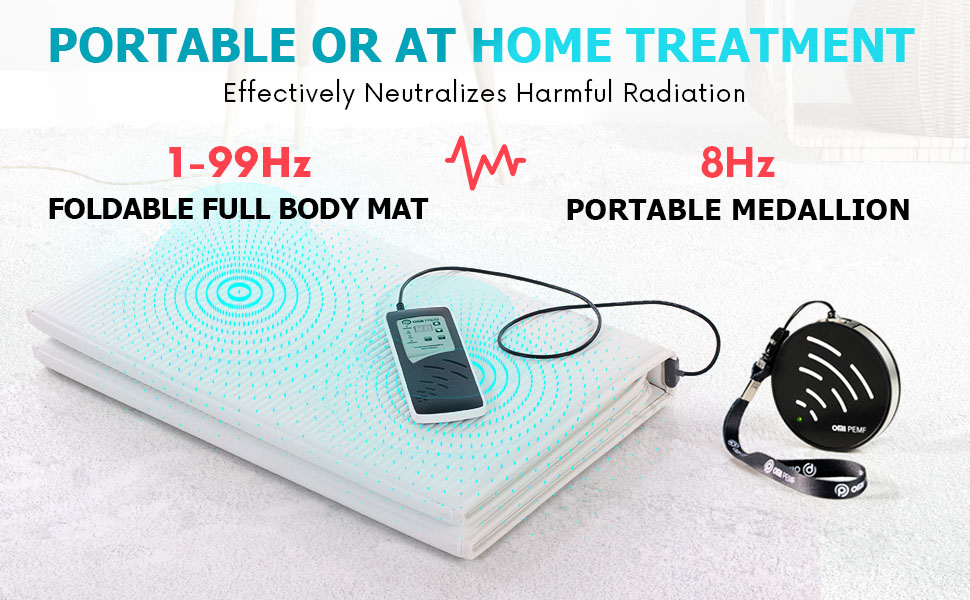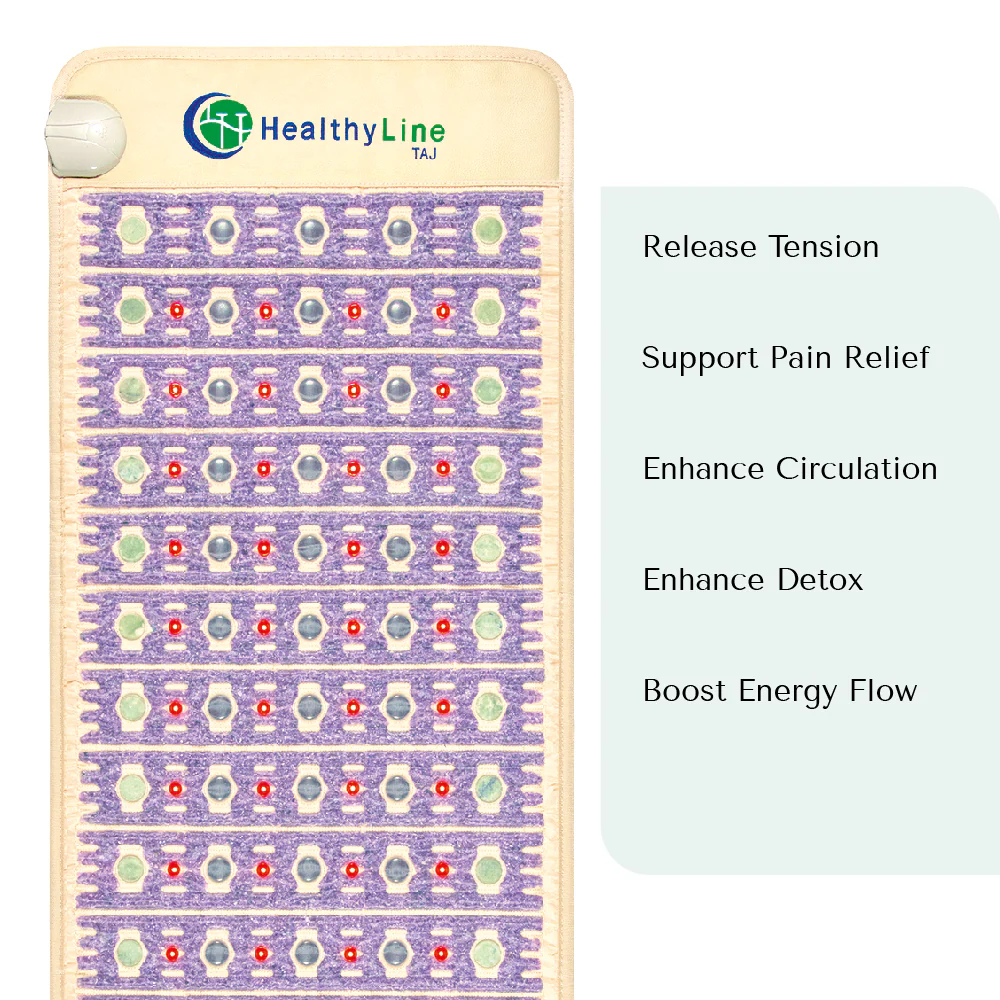If you’re considering Pulsed Electromagnetic Field (PEMF) therapy, you’re likely exploring its potential benefits and wondering if it’s covered by insurance. PEMF therapy has gained popularity for its ability to support recovery, reduce pain, and improve overall wellness. However, understanding insurance coverage for such therapies can be daunting.
This article will guide you step-by-step through the essentials of PEMF therapy, the specifics of insurance coverage, and how you can make informed decisions about your health investment. Along the way, we’ll highlight some highly-rated PEMF devices available on Amazon that you can consider if insurance doesn’t cover the therapy.
Understanding PEMF Therapy
PEMF therapy uses electromagnetic fields to stimulate and encourage the body’s natural recovery processes. It’s often used for conditions like chronic pain, arthritis, bone fractures, and even mental health issues like depression and anxiety. PEMF works by delivering low-frequency electromagnetic waves that penetrate deep into tissues, helping to reduce inflammation, improve circulation, and promote cell repair.
You might have heard about PEMF therapy being used by athletes, physical therapists, or even veterinarians. Its popularity is no surprise given the growing body of research supporting its effectiveness. However, whether it’s covered by insurance depends on several factors, which we’ll explore next.
Insurance Coverage for PEMF Therapy
One of the first questions many people ask is, “Does insurance cover PEMF therapy?” The answer isn’t straightforward because coverage can vary widely depending on your provider, policy, and even your location.
1. Factors That Determine Coverage
- Diagnosis and Medical Necessity: Insurance companies are more likely to cover PEMF therapy if it’s prescribed for a medically necessary condition, such as non-union bone fractures or certain chronic pain conditions. However, therapies for general wellness or preventive care are typically not covered.
- Type of Insurance Plan: Medicare, Medicaid, and private insurance plans each have different rules about alternative treatments. Some plans may partially cover PEMF therapy if it’s deemed necessary and administered by a licensed healthcare provider.
- Provider Billing Codes: If your therapist or doctor uses specific billing codes that align with your insurance plan, you have a better chance of coverage. Common codes include those for physical therapy, pain management, or bone healing treatments.
2. Challenges with Insurance Approval
While some PEMF devices are FDA-approved (like those for bone growth stimulation), many portable or home-use devices are considered experimental or alternative. This designation often excludes them from insurance coverage. It’s crucial to consult with your insurance provider and your healthcare practitioner before purchasing a device or committing to therapy sessions.
Exploring Affordable PEMF Devices
If your insurance doesn’t cover PEMF therapy, investing in a home-use device can be a practical alternative. Many people find these devices convenient, cost-effective, and just as effective for their needs. Here are some highly-rated PEMF devices you can find on Amazon:
1. OMI Full Body Mat


The OMI PEMF Full Body Mat is a popular choice for those looking for a full-body treatment. It offers adjustable frequencies, easy-to-use settings, and reliable performance for various conditions like joint pain and stress relief.
- Pros: Durable, easy to clean, and effective for chronic pain.
- Cons: Higher price point.
2. iMRS Prime PEMF Mat
Another excellent full-body option, the iMRS Prime mat, combines PEMF with infrared heat for added therapeutic benefits. Users love its multiple intensity settings and ability to target specific areas.
- Pros: Versatile, combines two therapies in one.
- Cons: More expensive than other options.
3. HealthyLine InfraMat Pro


The HealthyLine InfraMat Pro combines PEMF therapy with far-infrared heat and negative ions for a multi-faceted approach to pain and stress relief. It’s well-rated for its versatility and effectiveness.
- Pros: Multifunctional, customizable settings.
- Cons: Slightly bulky for smaller spaces.
4. Bemer Classic Set
The Bemer Classic Set is a premium PEMF device designed for improved circulation and cellular regeneration. It’s frequently praised for its build quality and clinically-tested results.
- Pros: Clinically validated, trusted brand.
- Cons: High cost, not portable.
5. Oska Pulse


If you’re looking for a portable, budget-friendly option, the Oska Pulse is a great choice. It’s compact, lightweight, and easy to use, making it ideal for travel or daily wear.
- Pros: Affordable, wearable design.
- Cons: Best for localized pain rather than full-body treatment.
How to Appeal Insurance Denials
If you’ve been denied coverage for PEMF therapy, don’t lose hope. Many insurance providers allow you to appeal their decisions. Here’s how you can do it effectively:
1. Gather Supporting Documentation
Ask your healthcare provider to write a letter explaining the medical necessity of PEMF therapy. Include any clinical studies or evidence supporting the therapy for your condition.
2. Contact Your Insurance Company
Call your insurer to ask why the therapy was denied. They may request additional documentation or suggest alternate billing codes.
3. File a Formal Appeal
Submit an appeal through your insurer’s official process. Be prepared to provide detailed information about your condition, the therapy, and why it’s necessary for your health.
4. Seek External Review
If your appeal is denied, you may have the right to an independent review by a third-party organization. This can be especially helpful if your condition qualifies under FDA-approved uses for PEMF.
Maximizing the Benefits of PEMF Therapy
Whether or not insurance covers your therapy, there are ways to make the most of PEMF treatments:
1. Use the Therapy Consistently
For optimal results, consistency is key. Follow your healthcare provider’s recommendations or the guidelines included with your PEMF device.
2. Combine with Other Treatments
PEMF therapy works well alongside physical therapy, chiropractic care, and other treatments. Discuss combination strategies with your doctor for a comprehensive approach.
3. Track Your Progress
Keep a journal to monitor your symptoms and improvements. This can be helpful for personal motivation and when discussing your results with healthcare professionals.
4. Choose the Right Device
Invest in a PEMF device that suits your needs, budget, and lifestyle. Carefully read reviews and consider products with high ratings and strong customer feedback.
Is PEMF Therapy Right for You?
If you’re unsure whether PEMF therapy is the right choice, start by consulting your doctor or a licensed healthcare provider. They can help you determine whether the therapy is appropriate for your condition and whether it’s worth pursuing even without insurance coverage.
For many people, the benefits of PEMF therapy outweigh the financial investment, especially when it helps alleviate chronic pain, speed up recovery, or improve overall wellness. However, understanding your insurance options and exploring affordable devices can help you make a decision that aligns with your health goals and budget.
Final Thoughts
PEMF therapy has the potential to transform your health, but navigating the insurance landscape can be challenging. By understanding the factors that influence coverage, exploring alternative options like home-use devices, and appealing insurance denials when necessary, you can take charge of your health journey.
Whether you go through insurance or invest in a device like the OMI Full Body Mat or Oska Pulse, you’re making an investment in your well-being. Explore your options, consult your healthcare provider, and take the next step towards a healthier, pain-free life.





